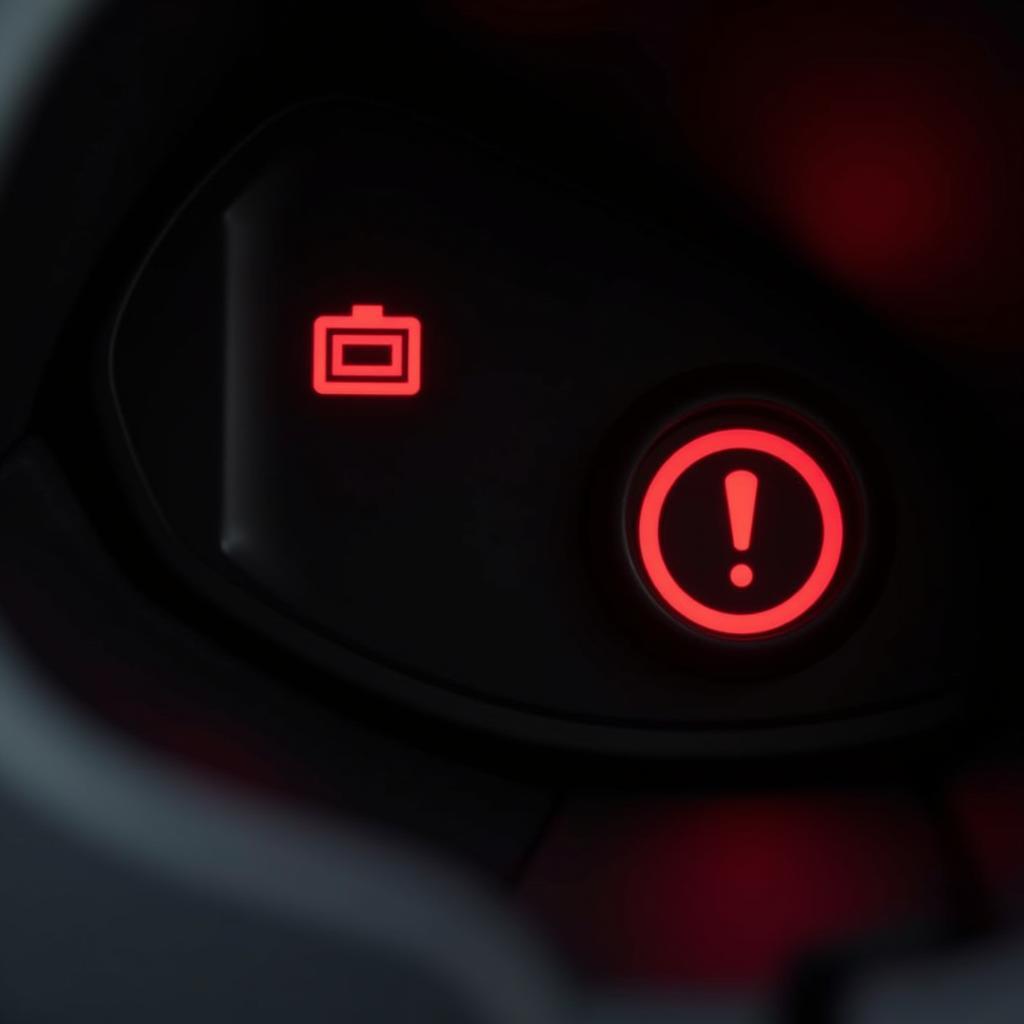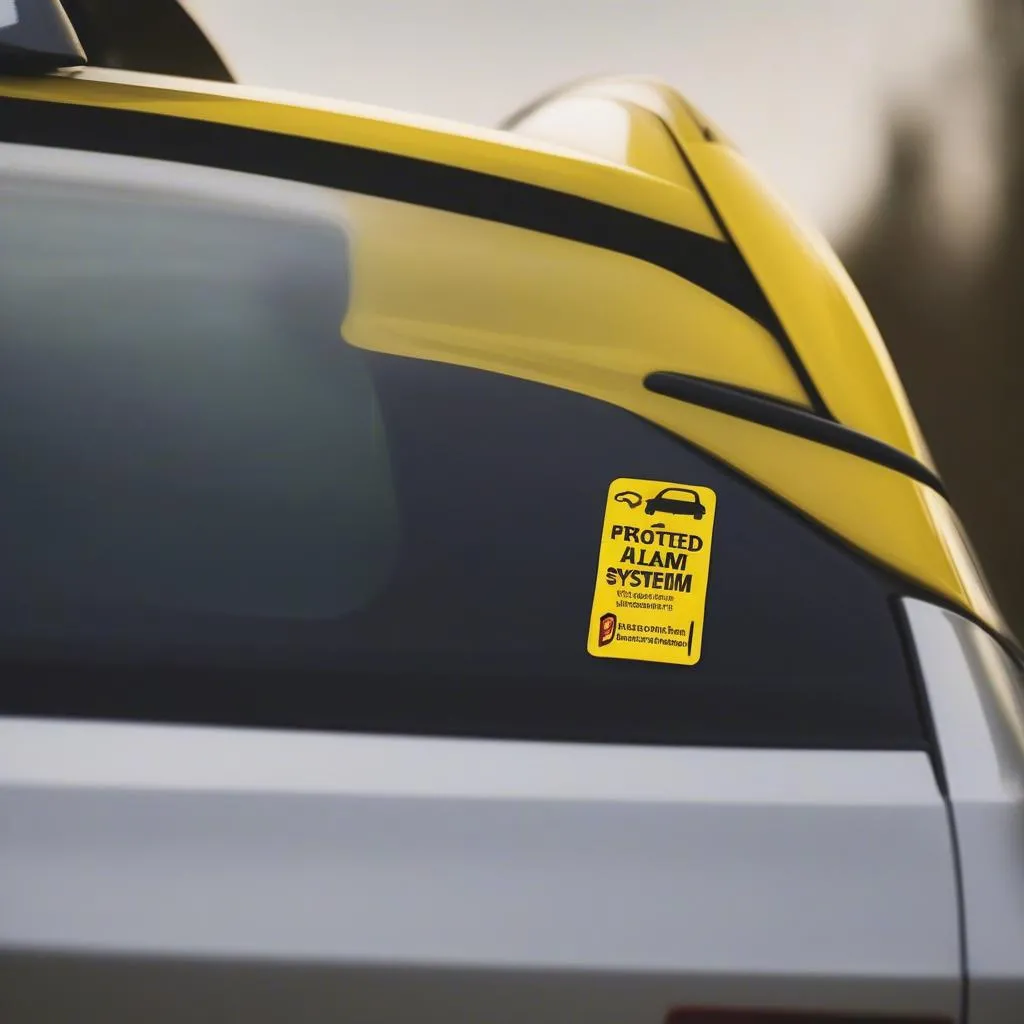If your brake light warning light is stubbornly glowing on your 1973 Mustang, it’s a signal you shouldn’t ignore. This issue, common in classic Mustangs, indicates a problem with your braking system, and understanding the causes and solutions is crucial for your safety and the car’s performance. This article will guide you through the process of diagnosing and fixing the brake light warning light on your 1973 Mustang, providing you with the knowledge and steps to get your classic back on the road safely.
Understanding the Brake Light Warning Light System in a 1973 Mustang
The brake light warning light system in your 1973 Mustang is relatively simple but vital. It’s designed to alert you to two main issues: low brake fluid level and a problem with the hydraulic system. The warning light is triggered by a pressure differential switch located in the master cylinder. When the pressure between the two braking circuits becomes uneven, the switch activates, illuminating the warning light. This can happen if there’s a leak in one of the circuits or if the brake fluid level is critically low.
Common Causes of a Brake Light Warning Light on a 1973 Mustang
There are several reasons why the brake light warning light might be on in your 1973 Mustang. These range from simple issues like worn brake pads or a low fluid level to more complex problems like a faulty master cylinder or a leak in the brake lines.
- Low Brake Fluid: This is the most common culprit. Check the brake fluid reservoir and top it off if needed.
- Worn Brake Pads or Shoes: As your brake pads wear down, the pistons in the calipers or wheel cylinders have to travel further to engage the brakes, lowering the fluid level in the master cylinder.
- Leaking Brake Lines or Hoses: A leak anywhere in the braking system can cause a loss of pressure and trigger the warning light. Inspect all brake lines and hoses carefully for signs of leaks or damage.
- Faulty Master Cylinder: The master cylinder is the heart of your braking system. If it’s leaking internally or not functioning correctly, it can cause the warning light to illuminate.
- Malfunctioning Pressure Differential Switch: The switch itself could be faulty, triggering the light even if there’s no actual problem with the braking system.
Diagnosing the Problem: A Step-by-Step Guide
Here’s a step-by-step guide to help you diagnose the issue:
- Check the Brake Fluid Level: Open the hood and locate the brake fluid reservoir. Check the fluid level and add DOT 3 brake fluid if necessary. If the level is significantly low, there’s likely a leak somewhere in the system.
- Inspect Brake Pads and Shoes: Check the thickness of your brake pads. If they are worn down, they need to be replaced.
- Examine Brake Lines and Hoses: Carefully inspect all brake lines, hoses, and connections for leaks, cracks, or damage. Look for signs of fluid leakage on the ground under the car.
- Test the Master Cylinder: If you suspect a faulty master cylinder, you can test it by depressing the brake pedal and observing the fluid level in the reservoir. If the level drops significantly, it indicates an internal leak.
- Check the Pressure Differential Switch: You can test the switch with a multimeter to ensure it’s functioning correctly.
Fixing the Brake Light Warning Light
Once you’ve identified the cause of the problem, you can take the necessary steps to fix it. Simple issues like low fluid levels or worn brake pads are relatively easy to address. However, more complex problems like a faulty master cylinder or leaking brake lines may require professional assistance.
“When working on brakes, remember safety first,” advises John Miller, a classic car mechanic with over 30 years of experience. “Always use the proper tools and procedures, and don’t hesitate to seek professional help if you’re unsure about anything.”
How to Prevent Future Brake Light Warning Light Issues
Regular maintenance is key to preventing brake problems. Check your brake fluid level regularly, inspect your brake pads and shoes at least every six months, and have your brake system inspected by a professional mechanic annually.
Conclusion
Addressing a brake light warning light on your 1973 Mustang should be a priority. Ignoring this warning can lead to more serious brake problems and compromise your safety. By following this guide and conducting regular maintenance, you can keep your 1973 Mustang’s braking system in top condition and enjoy a safe and reliable driving experience.
FAQ
- What type of brake fluid should I use in my 1973 Mustang? You should use DOT 3 brake fluid.
- How often should I check my brake fluid level? Check your brake fluid level at least once a month.
- Can I drive my 1973 Mustang with the brake light warning light on? It’s not recommended. The warning light indicates a potential problem with your braking system, and driving with it on could be dangerous.
- How much does it cost to replace a master cylinder on a 1973 Mustang? The cost can vary depending on the part and labor costs in your area.
- How can I tell if my brake lines are leaking? Look for signs of fluid leakage on the ground under the car, and visually inspect the lines for cracks or damage.
- Is it difficult to replace brake pads on a 1973 Mustang? It’s a relatively straightforward job, but it’s important to follow the proper procedures and use the correct tools.
- What should I do if my brake light warning light stays on even after adding brake fluid? If the light stays on after adding fluid, there’s likely a more serious problem, and you should have your braking system inspected by a professional mechanic.


